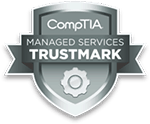 It’s true that social media and mobile marketing campaigns are, in fact, gaining tons of traction. However, email marketing is not only still relevant—it’s still effective and a popular channel to get the word out. In fact, it may still be the most effective way to acquire new customers—when you rethink the emails you’re sending.
It’s true that social media and mobile marketing campaigns are, in fact, gaining tons of traction. However, email marketing is not only still relevant—it’s still effective and a popular channel to get the word out. In fact, it may still be the most effective way to acquire new customers—when you rethink the emails you’re sending.
A study by Quartz Insights indicated that 60% of executives read an email newsletter from a different company as one of their first three news sources they check every day. That’s pretty significant, especially if the information contained in those newsletters is both useful and promoting your company. However, it does take a bit of finesse to be a newsletter people wants to read, so while standard, dated emails may be a thing of the past, exceptional, informational and interesting newsletters are definitely a thing of the present.
Tip #1: Make Sure You Send Your Own Emails
Sometimes automated emails are great. They’re excellent for invoices, confirmations, webinar reminders and all sorts of other things. They’re easy to read and even easier to understand and require a simple glance. However, third party emails have limited use, especially when those emails are sent out without a single piece of input from you.
It’s important to at least know what the auto-emails say, and it’s better if you can look at them and customize them to a point. If an email just doesn’t get the point you want to get across, then it’s time to take over completely and change it as much as you need.
Unless you’re sending out hundreds and hundreds of transaction emails a day, it’s not hard to create your own emails—or, at least, customize the template so a new customer is reminded of what they like about you, even in receipts.
Tip #2: Make It Personal
After you’ve branded emails correctly—even the auto-responders—you can start making sure that all the content is personal. Transparency is key these days, so you need to make sure even your alert emails for products and monthly newsletters can really matter. People like stories, even if they’re about a company they don’t know much about; this is a great opportunity for consumers to learn more about you. You don’t need to share your revenue with your audience immediately, but people love content when it’s personal with no hidden agenda.
You should always send emails from real addresses, and you should monitor replies in case anyone has any questions. Always sign emails with your name, and address the email to the person it’s meant for. Get personal. Talk about failure, talk about success, talk about learning lessons—you’ll see tons of response to these emails in comparison to a standardized drip campaign email.
Tip #3: Test Your Emails
Once you’ve designed a personal narrative, telling it should be easy—but do you know the right way to tell it? Fortunately, that’s what A/B testing is for. Tell your story in two different ways. Create your subject lines in two different ways. Take different emotional routes. What works best for you? That’s the style you should pursue in your emails.
No matter what approach you take, it’s important to be clear, concise and honest. Worry about the small stuff after you have the appeal down, and your emails actually matter to your target audience.




